As Part II of my recent Floaties At A Funeral post (which used ChatGPT’s image generator to create photo-real images from storyboards) I set a more ambitious goal:
Create a complete movie poster from a single, detailed prompt.
So I went back to a screenplay I wrote at the Sundance Labs called The Radioactive Boy Scout. Based on a true story, it’s about a boy in Michigan who, in the pursuit of his Eagle Scout badge, builds the core of a nuclear reactor in his backyard shed and is shut down by the Federal government.
I wrote it as a comedy exploring the two sides of the main character David, growing up as a dutiful Midwest “good kid” and the wild, sometimes destructive impulses as a passionate but misunderstood scientist. I always had an idea for the poster that combined two iconic images: Norman Rockwell’s painting of a Boy Scout and Jane Fonda’s rebellious mug shot.
I wanted to retain the Boy Scout salute in his right hand while his left held the mug shot board with his name, adding smudges of soot on his uniform and dissheveling his hair, adding a proud smile. Usually, a concept like this would require a professional photo shoot to pull off. Could I write a single prompt that could replicate a similar level of craft and polish?
The Prompt
The following is the text I landed on to generate the final image in ChatGPT, after an iterative process of trying shorter prompts, seeing the results, then tweaking and adding details. It started with attaching a reference for the Atomic Energy badge and Rockwell’s painting…
Then I went on to describe the poster in as much detail as I could…
Keep the same Norman Rockwell painting style but turn it into a police mug shot with black height lines on a white wall. Make sure the lines are equally spaced.
The boy's left hand should stay up in the 3-finger salute like in the reference, but his other hand holds a mug shot board with the name "David Hahn" on it in the middle, with one row of booking numbers below it. Across the top of the board in smaller lettering reads "Macomb County Police".
The Boy Scout should smile big and proud, his clothes disheveled and unkempt, with no other writing or badges on his clothes. Put small smudges of soot and dirt on his clothes and face. His hair is messy and unkempt.
Put the film title at the top in bold red movie poster-style lettering with all words the same size except the “THE” which can be smaller at the top, with the O in the word Radioactive replaced with the attached stitched Atomic Energy merit badge.
Finally, add a thick red border to frame the poster in a portrait aspect ratio.
But before I reveal the outputs I got from ChatGPT, let’s first review what this prompt created in another popular image generation tool…
Midjourney
Before ChatGPT’s Image Gen dropped, Midjourney was for me the premiere text-to-image tool out there. So I started with the v6 model, also including the original Norman Rockwell painting as reference.
While the vintage style and facial expressions were in the ballpark, I couldn’t get the painterly vibe, the right mug shot height lines, booking board, dirt smudges, tousled hair, or the three-fingered Scout salute in any of the outputs. And for the text, some of it was spelled correctly, but it couldn’t figure out where to put it…
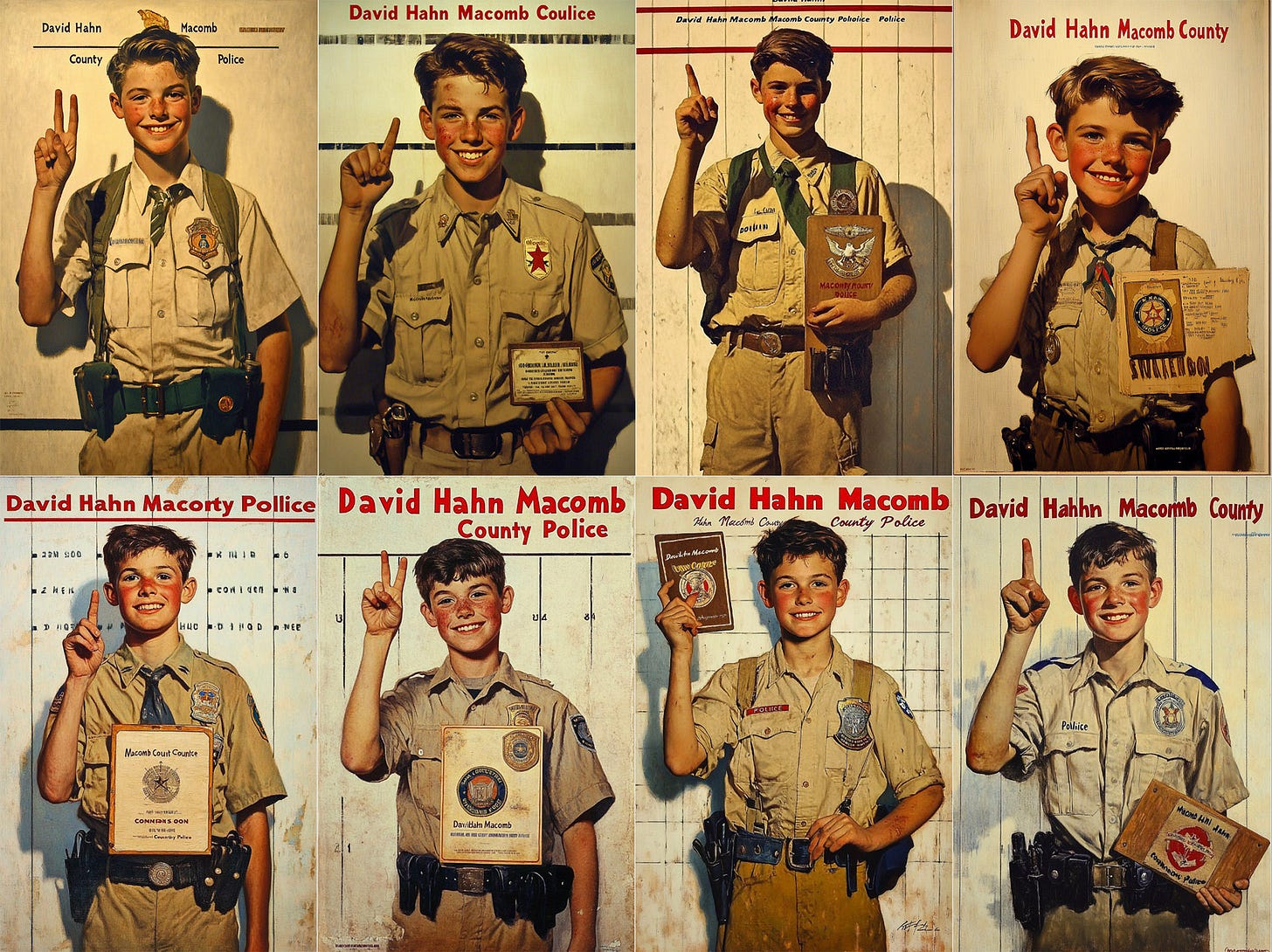
Ok, I thought, the latest v7 model will be better, especially since they promoted it as having much better text rendering. As you’ll see below, It created more consistent height lines, put the title at the top and David’s name on the board (even if they were often gibberish), and in a few I got tousled hair.
But it still couldn’t get the three-fingered Scout salute. It either gave me the peace sign, three wrong fingers sticking up, or a military salute. And none of them really captured the vibe of a mug shot.
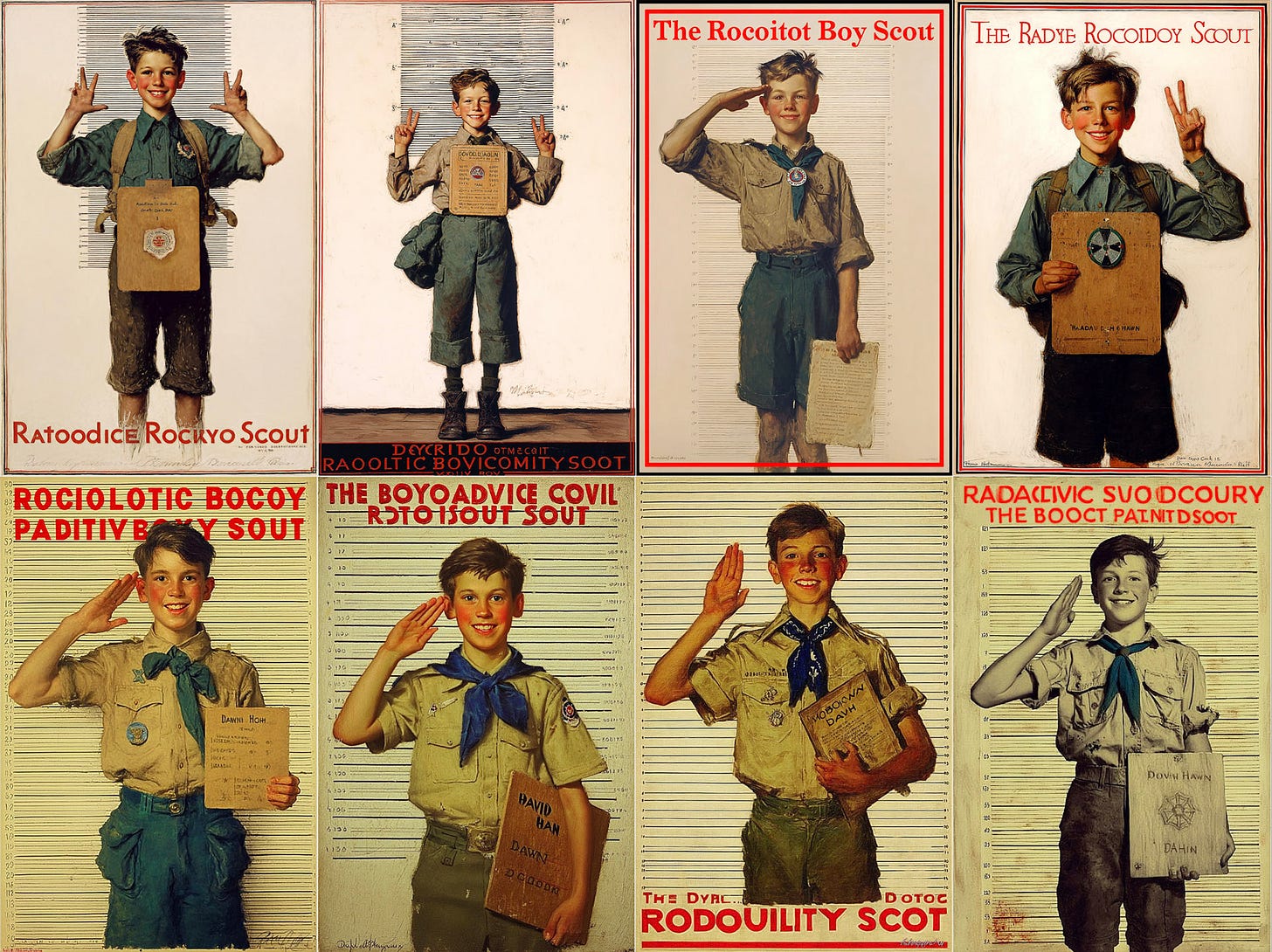
In my last effort, I removed the image references entirely and prompted for either the Norman Rockwell or photo-real style, which led to more images feeling like a mug shot, but as you can see, the exact details for the image, layout, pose, and text were just not there…

In the end, the length and details in the prompt seemed to overwhelm Midjourney. I needed something smarter, combining the intelligence and contextual understanding of a large-language model with a high-resolution image generation model…
ChatGPT Image Gen
From the very first image I got back, I was amazed: ChatGPT’s LLM-based image generator was able to handle every aspect of my prompt down to the smallest detail, generating a credible version every time, even when I tweaked small details like color, font, border, or level of soot…
The only errors were the slightly wonky details on the Atomic Energy badge in the title, some mislabeled numbers on the height lines, and the occasional two fingers for the Boy Scout salute (which I easily corrected with a follow-up prompt asking for three). In a few of them, it even added a date on the mug shot board from 1994 – the year this true story took place – without me prompting it.
With outputs this fully realized, it allowed me stay focused on the creative direction, refining the image via revisions to and expansions of the original prompt, bringing it closer and closer to what was in my head.
Dialing In The Details
In all the versions, it did a solid rendition of Norman Rockwell’s painterly style, but in the end I felt it was a little too illustrative. So I re-uploaded my favorite output (on the left below) and prompted it to be a bit more photo-real, zooming out on the kid to see more of him, and removing the numbers on the left.
I also asked it to put a greeked credit block at the bottom for placement, along with the red border. In the process, it changed the title font and booking board slightly, but I actually liked the changes, so left them…
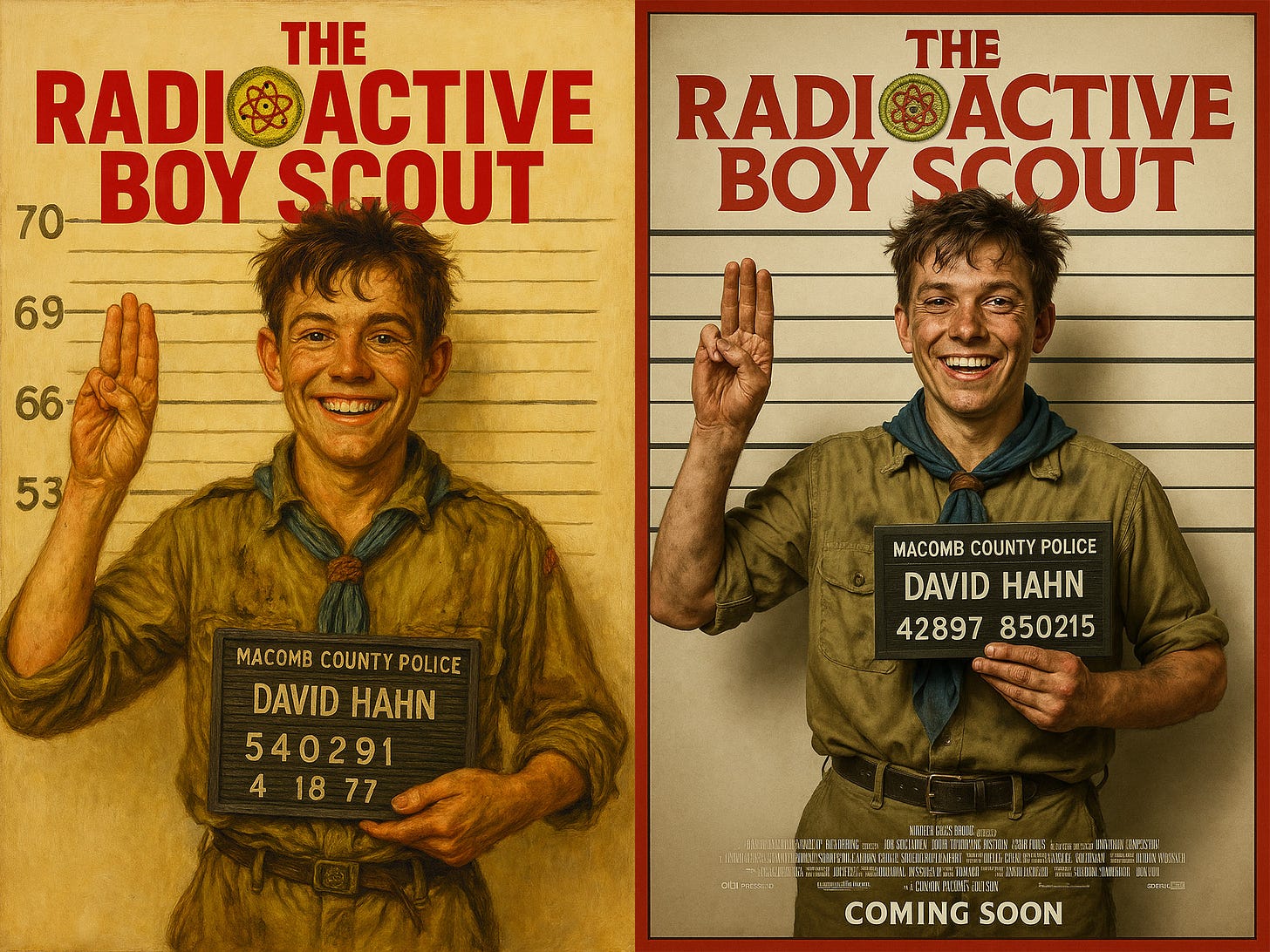
The Final Poster
Using Photoshop’s Firefly, I removed the greeked credit block, then added a real one, along with the tag line, with the text tool. I then dropped a real photo of the Atomic Energy badge for the “O”, making it more pristine and detailed.
Lastly, I uprezzed the entire image in Topaz Gigapixel to 6k. You can click and zoom in on the image below to explore how clean and accurate the AI-generated image details are while retaining the painterly vibe of the original Norman Rockwell reference…
Last Thoughts
Admittedly, this test doesn’t map onto the actual process of our Key Art team, which typically starts with a deeper creative exploration of sketches and references; Presenting clients things too finished or photo-real too early can be distracting (though a similar process could be used with a pencil sketch style). And even more importantly, virtually all our entertainment clients have a “No AI” policy in finished work, and some even forbid it in any form, even as reference or pre-visualization.
This test was also a much simpler poster concept. Prompting for more complex layouts might get dicier, as would creating consistent celebrity likenesses (something ChatGPT blocks most of the time). Our world-class Key Art team at MOCEAN is still the gold standard in concepting, taste, and artistry when creating an actual campaign (and there’s no doubt you’d feel a difference if one of our human artists hand-painted the Rockwell influence).
Still, ChatGPT’s image generator is a big step forward for generative AI; With a natively multimodal model we get image generation augmented with the vast world knowledge already present in the tool, with next-level text rendering and native in-context learning.
The same natural conversations we’re used to having with ChatGPT’s text now seamlessly flows into the creation and editing of images – in essence, the model can now speak in both text and visuals. And once this level of complexity, accuracy, and intelligence gets applied to OpenAI’s video model Sora, I think we’re in for yet another game-changing moment in the world of AI filmmaking.





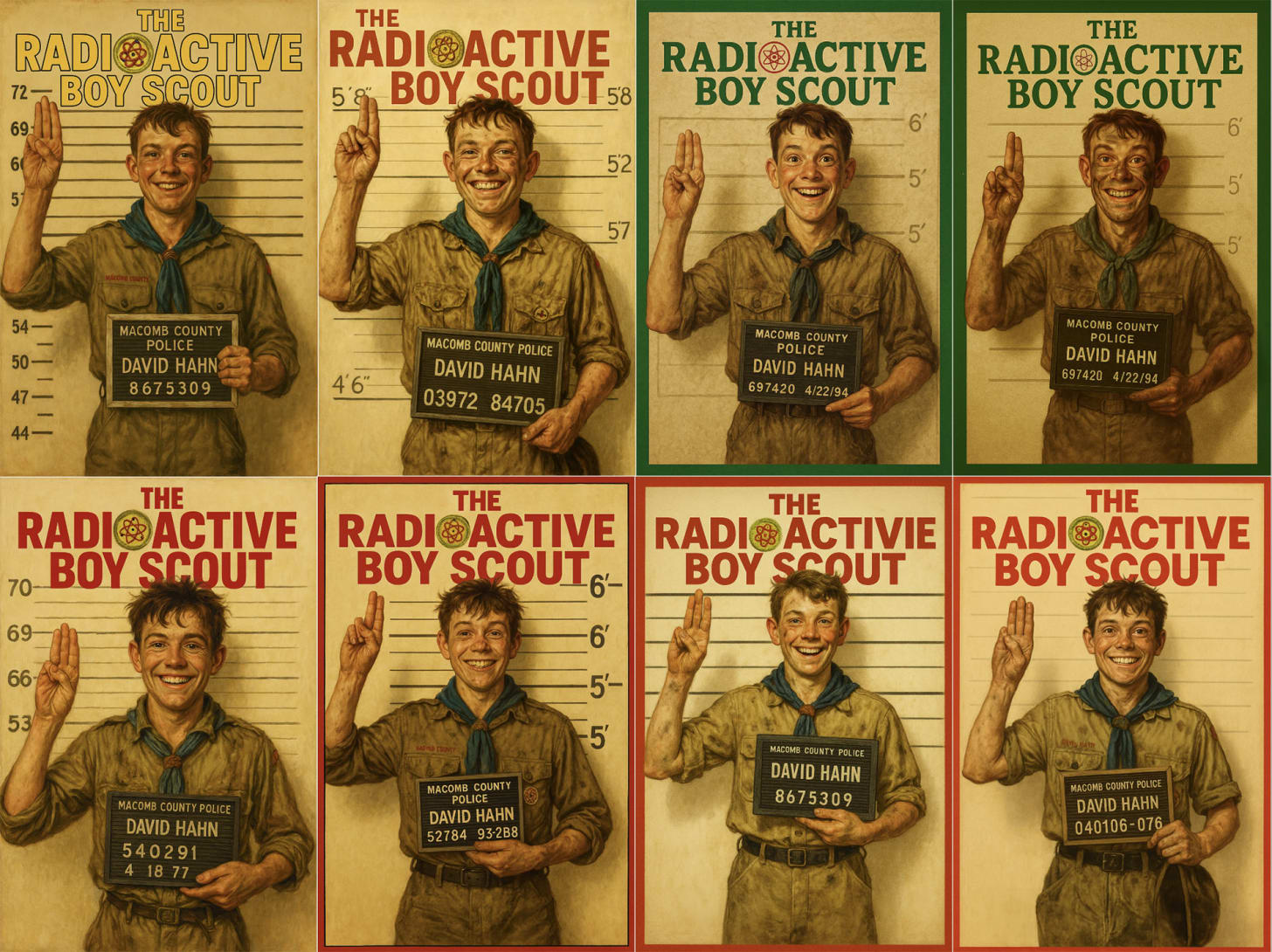
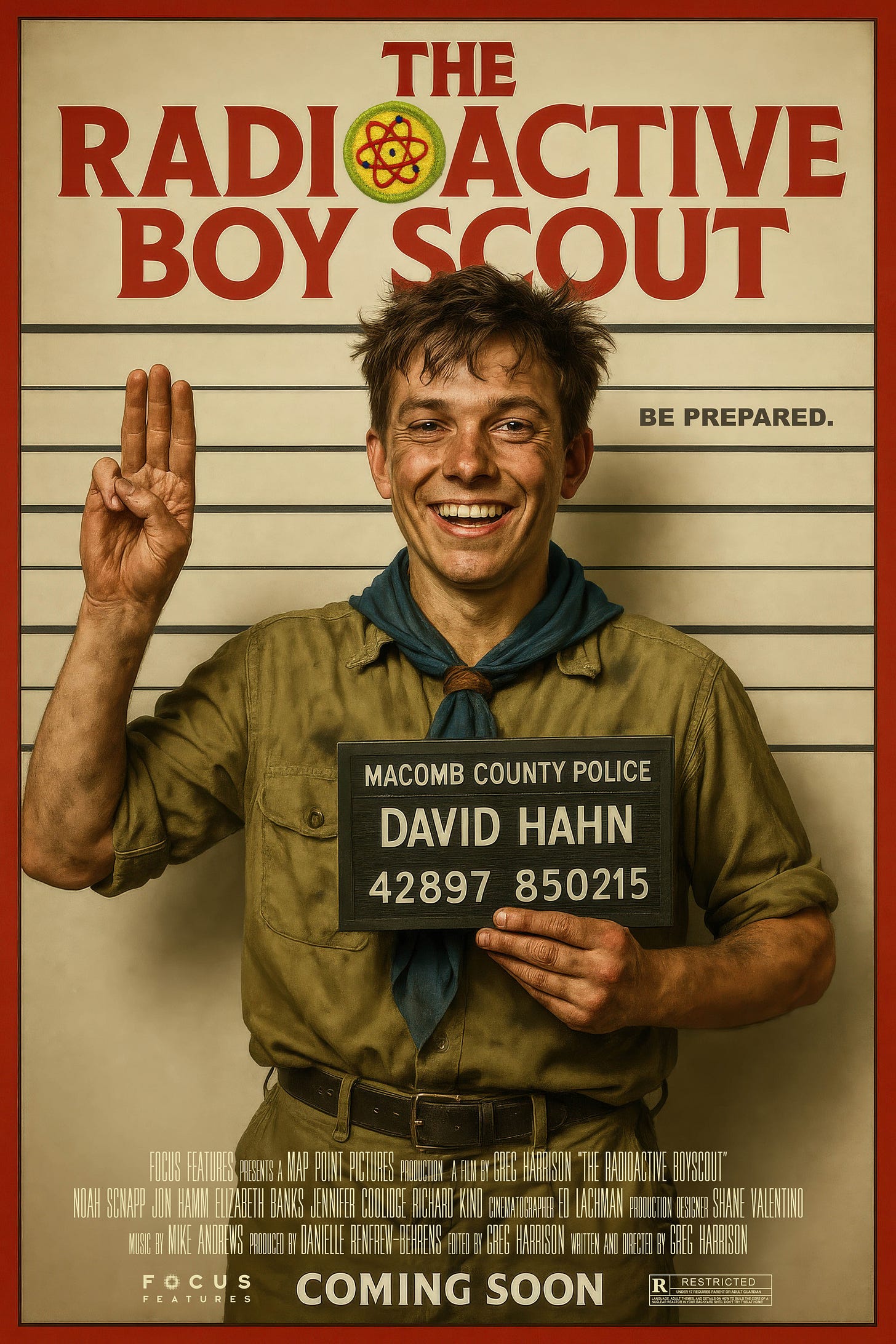
Thanks for describing the process and showing your steps through. Impressive!
I really enjoy understanding how you are using AI and the fails and successes.